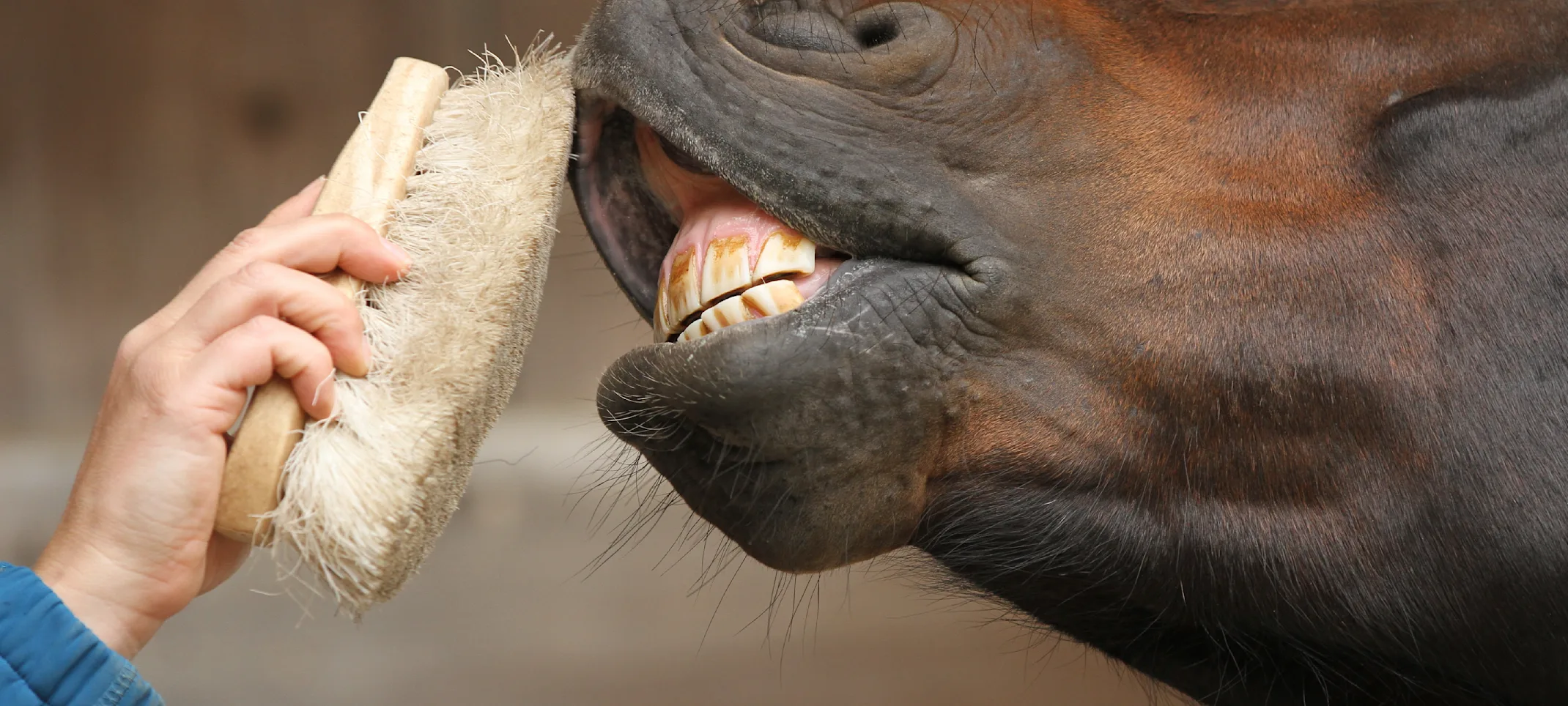Burnham Park Animal Hospital
Equine Floating
Dental hygiene is just as important for horses as it is for humans and other animals, and floating is a key part of any equine dental treatment plan.

What is Floating?
Floating is a dental care process for horses that involves gently filing away sharp edges or hooks on the teeth to create a flat surface. The file that is used for this process is called a “float” and can be manual or electric.
Floating is generally a quick and painless process, however, discomfort may occur if your horse has other dental concerns, such as injuries or gum disease.
Why is Floating Necessary?
Horse’s teeth tend to wear down unevenly, which can leave sharp edges, ridges, or hooks that may not only make it difficult to properly chew their food, but can also lead to cuts or sores inside their mouths. Floating removes these sharp points which in turn makes it easier for your horse to chew thoroughly, efficiently, and comfortably.
When Should Your Horse’s Teeth Get Floated?
It’s important to have a dental exam done at least once a year for all animals, including horses. Your veterinarian will identify if your horse’s teeth need to be floated during this annual exam. Some factors that may affect how frequently your horse’s teeth need to be floated include:
head and jaw proportions
age
diet
tooth eruption rate
lost teeth or other dental problems
Additionally, your horse may show signs that floating or other dental care is needed, such as:
dropping food
difficulty chewing
bloody or excessive saliva
loss of appetite and/or weight loss
cuts on the cheek or tongue
bad breath
In general, adult horses should have their teeth floated once per year, but how often your horse needs this procedure will be determined by your veterinarian.
